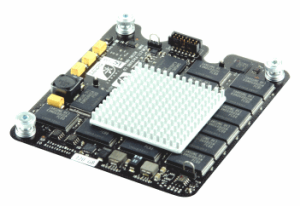 NEWS
NEWS
 NEWS
NEWS
 NEWS
NEWS
![]()
Most people probably already use flash storage in one form or another. Whether it is an SD card in a camera or the internal memory of an iPad, flash has already achieved ubiquity in the consumer electronics space. Some analysts are now predicting that flash storage will eventually find a similar home in enterprise IT: on the server, on network devices, and in other data center infrastructure. Flash, they assert, is the future of enterprise storage.
Once upon a time, tape ruled the storage world – the same magnetic tape found in audio cassettes, movie film, and many other media. It was the best form of persistent storage available. It was persistent because whatever data it contained was still there when the computer was shut off and later restarted. The same was not (and still isn’t) true of the computer’s RAM.
Over time, hard disk drives (HDD) eventually replaced tape drives as the primary form of persistent storage on computers. Hard drives were faster, smaller and were able to store increasingly larger amounts of data at lower prices over time as the technology improved. While tape still exists for some long-term backup operations, such as Google’s Gmail, hard disk drives now rule when it comes to active server storage arrays.
Just as hard drives eventually supplanted tape drives, flash has positioned itself to gradually replace hard disk drives. Flash is faster, smaller, and able to store large amounts of data at quickly decreasing prices. The price drop for flash storage has been about 60 percent per year, whereas the price decrease for HDDs is about 37 percent per year.
In 2008, EMC launched its new line of Symmetrix systems running solid state drives (SSD), which used flash technology, many of its competitors scoffed at it, arguing that the technology was too expensive for enterprise. Two years later, EMC was shipping over 10 petabytes of flash per year, and today, its competitors all have their own flash offerings. This trend will likely continue, as flash is cheaper than high-end fibre channel (FC) hard disk drives and has already taken root in high IO storage. It could soon take the place of many HDDs in servers all over the world.
The Evolving Technology Behind Flash
Early flash technology raised concerns about write speeds and write endurance. While it could read data faster than an HDD, early solid state drives wrote data slower. Some servers were configured using SSDs for more permanent information (i.e. operating system and applications), while still keeping their more frequently-modified data on HDDs. Those issues have largely eroded now, and flash technology now has speed advantages in both input and output.
Flash storage has many advantages over hard disks. Among them are:
Flash usage trends have emerged in the following areas:
While the technology of flash storage continues to evolve in the enterprise space, it is moving at a much slower pace than the consumer market. This is normal. While your fancy Macbook Air may work just fine with a solid state drive, companies that have servers dealing in terabytes rather than gigabytes may not yet be ready to adopt solid state drive arrays just yet. They may, however, see the immediate benefits of technology like a PCIe IO accelerator.
Moreover, there are still some limitations to flash storage that may keep some enterprises at bay for the near future. Flash cells work by manipulating electrons through a floating gate. As those electrons are coaxed through, some are left over. Over time, this can wear down a flash cell as its electrical resistance increases, requiring more electrical current. Eventually, it will become so great that the cell is no longer writable. A server that sees hundreds, thousands, or even millions of writes to disk each day cannot afford to have storage degradation. This is a problem flash vendors will need to solve.
What Flash Means for CIOs and the Reshaping of Infrastructure
CIOs must ultimately look at the bottom line, which always comes down to cost in relation to performance. If performance increases while cost decreases, it is good for the company. On the path that flash storage is now headed, the performance should continue to increase while the cost continues to drop.
What that means for CIOs is flash will dramatically alter the course of storage architecture over the next decade, and CIOs will need to prepare their businesses and employees for the increase in the amount of data they can process within a given day and the changes in tech training and maintenance that will come with flash technology.The architecture of the data center will necessarily change, as flash technology is introduced into servers. Operating systems, databases, and middleware must all adapt to the nuances of flash in order to benefit from the performance improvements it promises to bring.
Most importantly, the introduction of flash storage is not a reason to panic. Humanity has been using flash for years in their mobile phones and other devices without any major negative consequences. So too will enterprise IT seamlessly make the transition, and the results will be better performance and ultimately more innovation and progress.
Image credit: HpbladesystemTHANK YOU